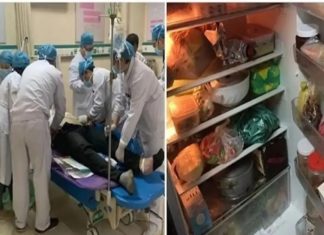From Innocence to Infamy: The Tragic Transformation of Aileen Wuornos
In the serene town of Rochester, Michigan, a young girl named Aileen Carol Wuornos began her life in 1956, unwittingly setting the stage for a journey that would lead her to become one of the most infamous female killers in American history. Born to a mere teenager, Aileen was thrust into a world of instability and turmoil from the very start. Her mother, Diane Wuornos, married Leo Dale Pittman at a young age, a man who would soon reveal his violent nature and eventually be imprisoned for heinous crimes. This initial chaos would lay the groundwork for Aileen’s tumultuous future, marked by a lack of stability and support.
By the time Aileen was just a toddler, her father was incarcerated, leaving her and her older brother, Keith, in the care of their grandparents, Lauri and Britta Wuornos. While many might view this as a chance for a stable upbringing, the reality was far more grim. The household was marred by mental health issues, alcoholism, and verbal abuse. Aileen grew up in an emotionally volatile environment, where affection was often absent. In her own reflections, she noted that love was something she observed in others rather than experienced firsthand. This lack of nurturing would deeply affect her ability to form trusting relationships in adulthood, setting a trajectory for her deep-seated struggles with intimacy and self-worth.
As Aileen entered her pre-teen years, her circumstances worsened significantly. At the tender age of eleven, she began engaging in sexual acts with neighborhood boys, often exchanging these encounters for basic necessities like food and cigarettes. This troubling behavior was not only a reflection of her desperate situation but also an early indicator of the traumatic experiences that would define her life. By the age of thirteen, Aileen found herself pregnant, claiming that she had been sexually assaulted. However, her situation went unaddressed, with no legal action taken. The birth of her son, whom she gave up for adoption, marked another profound loss in her life. This compounded her feelings of abandonment and isolation, leaving her to grapple with the emotional aftermath alone.
Tragedy struck once more as Aileen experienced the deaths of her grandparents, leading her and her brother to become wards of the state. The foster care system provided no solace, often mirroring the instability and abuse of her earlier environment. Aileen’s experiences in foster care further deteriorated her already fragile mental state, culminating in her decision to drop out of school. With no support network to rely on, she resorted to living in abandoned vehicles and relied heavily on hitchhiking to navigate her precarious existence. This period marked a profound shift in her reality as she turned to prostitution not out of choice but as a desperate means of survival. The turmoil of her youth left her feeling increasingly isolated from a society that had consistently failed her.

As Aileen transitioned into her twenties, her struggle intensified. She traveled throughout the United States, living a transient lifestyle characterized by theft, petty crime, and prostitution. It was during this dark chapter of her life that she met Tyria Moore in 1986, a hotel maid with whom she formed a romantic relationship. Despite the emotional support they provided each other, Aileen’s life remained fraught with challenges, primarily stemming from their financial instability. The couple’s relationship, characterized by a mutual need for each other’s presence, also highlighted Aileen’s profound loneliness and desperation for connection. Yet, it was during this tumultuous period that Aileen’s life would take a dark turn, culminating in a series of violent crimes that shocked the nation.
The pivotal moment came in December 1989 when the body of Richard Mallory was discovered, marking the start of a grim pattern that would lead to Aileen’s notoriety. Over the next several months, multiple bodies of men who had offered Aileen rides were found, each murdered and left abandoned. The investigation quickly led to Aileen, who was arrested in January 1991. During questioning, she claimed she acted in self-defense, asserting that the men had attempted to assault her. However, prosecutors argued that her actions were premeditated and motivated by theft, effectively framing her as a cold-blooded killer. This dark chapter in her life culminated in a highly publicized trial where Aileen Wuornos was portrayed by the media as a monstrous figure, a narrative that seemed to overshadow her tragic past and the systemic failures that contributed to her violent actions.
In 1992, Aileen was convicted and sentenced to death, a sentence that was a culmination of not just her actions but the myriad of unresolved trauma from her childhood. Her courtroom statements reflected a complex psyche shaped by years of suffering and survival. She oscillated between taking full responsibility for her actions and vehemently insisting that she was a victim of circumstance, a woman molded by the pain and neglect of her formative years. Aileen spent her remaining years in prison, where she continued to provide interviews that revealed her conflicted nature—sometimes resigned, sometimes combative. In a chilling final statement before her execution in 2002, she expressed a sense of liberation, indicating a longing to escape the pain she had endured for so long, a poignant reflection on the suffering that had defined her life.
The saga of Aileen Wuornos serves as a haunting reminder of the consequences of neglect, abuse, and the failure to provide protection for vulnerable children. Her story raises critical questions about the intersection of mental health, societal failure, and the complexities of human behavior. Was Aileen born with a predisposition for violence, or was she a product of her environment, where love was scarce and survival often meant resorting to the darkest of means? The legacy of her life is both a cautionary tale and a profound tragedy, illustrating the potential for human devastation when care and compassion are absent. Aileen’s story, while deeply unsettling, prompts a broader conversation about the societal responsibilities we hold towards those who are marginalized and vulnerable. It challenges us to reflect on the systemic issues that contributed to her demise and the lives of countless others like her.






![[Rest in peace] He opened her belly and ate…See more [Rest in peace] He opened her belly and ate…See more - featured image](https://pes-tournaments.com/wp-content/uploads/2025/11/558870860_1132868955649730_4312601791294881736_n.jpg-218x150.jpg)





![[Rest in peace] He opened her belly and ate…See more [Rest in peace] He opened her belly and ate…See more - featured image](https://pes-tournaments.com/wp-content/uploads/2025/11/558870860_1132868955649730_4312601791294881736_n.jpg-324x235.jpg)




![[Rest in peace] He opened her belly and ate…See more [Rest in peace] He opened her belly and ate…See more - featured image](https://pes-tournaments.com/wp-content/uploads/2025/11/558870860_1132868955649730_4312601791294881736_n.jpg-100x70.jpg)